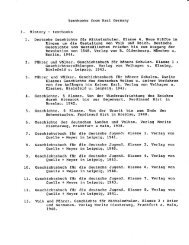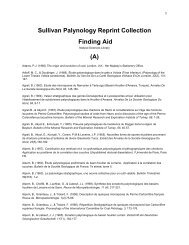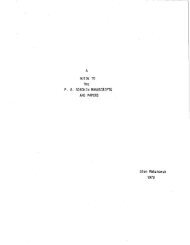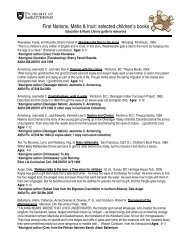GREEN SEED COAT COLOUR RETENTION IN LENTIL - University ...
GREEN SEED COAT COLOUR RETENTION IN LENTIL - University ...
GREEN SEED COAT COLOUR RETENTION IN LENTIL - University ...
You also want an ePaper? Increase the reach of your titles
YUMPU automatically turns print PDFs into web optimized ePapers that Google loves.
An opportunity exists for green lentil producers who are willing to take extra<br />
risk. By choosing to grow a variety that has a long maturity they may be able to<br />
produce a lentil sample with improved visual seed coat quality compared to shorter<br />
maturing lines in the same environment. There would be more risk from late season<br />
frost for the longer maturing lentil varieties. Other options for green lentil producers<br />
could be applying the preharvest treatment earlier than currently recommended. It<br />
is not known the yield and seed weight effects of the early preharvest treatment but<br />
a better visual seed quality could be harvested.<br />
It is not known what the effect of preharvest treatment with glyphosate would<br />
have on the quality of the green lentil sample. Although glyphosate is not a true<br />
desiccant, its mode of action does not affect any membranes and may allow for the<br />
harvest of better green colour of the seed coat in lentil in comparison to diquat.<br />
However the use of glyphosate as a preharvest treatment would restrict the use of<br />
the lentils for seed.<br />
Another factor that may affect the quality of the sample is the thickness of the<br />
swath. Less light would penetrate the dense swath allowing less light to reach the<br />
seed coats of the lentil compared to the open canopy of a standing desiccated lentil<br />
crop. One problem with swathing occurs when a large amount of precipitation<br />
occurs. The pods near the ground remain moist longer than pods in a standing<br />
senesced crop and some level of disease may occur. Some of the samples from the<br />
swathing preharvest treatment in 2005 had botrytis grey mold (Botrytis cinerea) and<br />
76

















